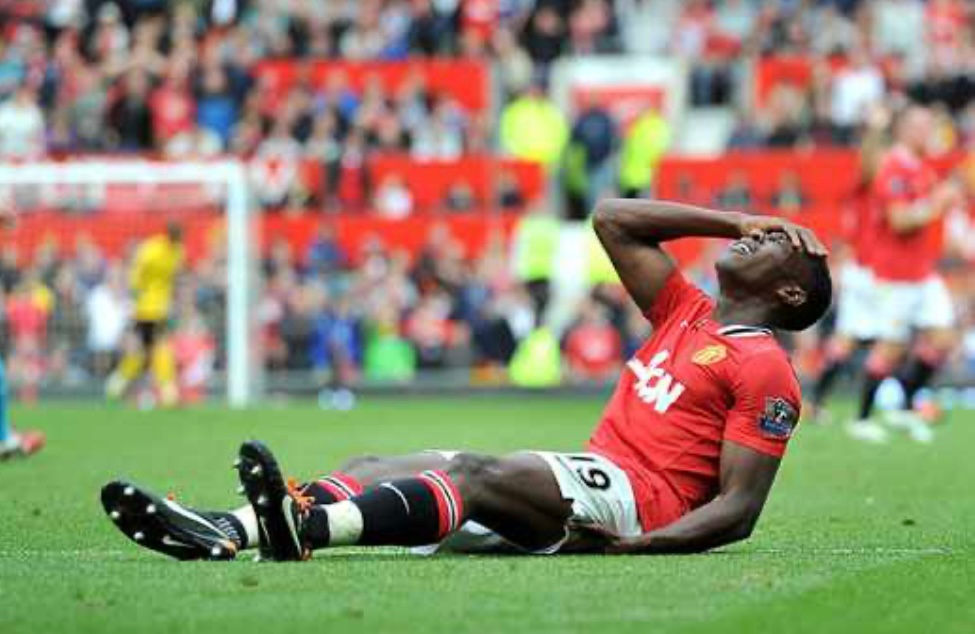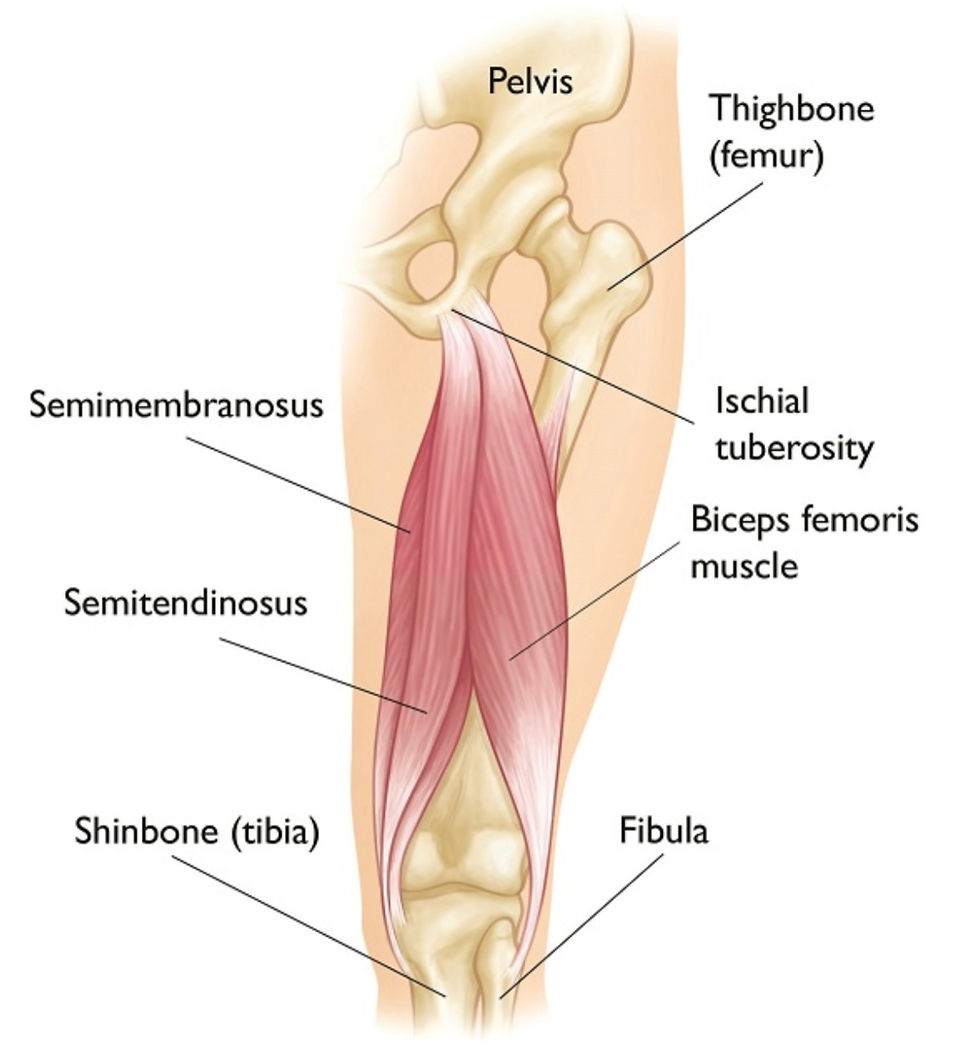Behrang Dehkordi MD

Hamstring strains, otherwise known as a “pulled hamstring” are the most common injuries in soccer, accounting for a significant portion of all injuries and causing substantial time loss for players. This article will explore the nature of hamstring strains, their mechanisms, diagnosis, treatment, prognosis, and prevention strategies in soccer.
Prevalence and Symptoms of Hamstring Strains in Soccer
Hamstring injuries represent a significant problem in professional soccer, with their prevalence increasing over the years. According to a 21-season study of European professional soccer players, hamstring injuries accounted for 19% of all reported injuries, with the proportion rising from 12% in the 2001/02 season to 24% in the 2021/22 season. This increase is concerning, as hamstring injuries now cause 20% of all injury absence days, up from 10% two decades ago. The symptoms of a hamstring strain typically include:
Sudden, sharp pain in the back of the thigh
A popping or snapping sensation at the time of injury
Pain when walking, straightening the leg, or bending over
Tenderness and bruising in the affected area
Weakness in the injured leg
The severity of these symptoms can vary depending on the grade of the injury, which we'll discuss in more detail later
Anatomy and Function

The hamstring muscle group consists of three distinct muscles located in the posterior compartment of the thigh: the biceps femoris, semitendinosus, and semimembranosus. These muscles originate from the ischial tuberosity of the pelvis, except for the short head of the biceps femoris, which originates from the femur (thighbone). The biceps femoris inserts into the head of the fibula (the bone on the outside of the tibia or shinbone), and lateral tibial condyle, while the semitendinosus and semimembranosus insert into the medial surface of the tibia. All three muscles are innervated by the tibial division of the sciatic nerve, except for the short head of the biceps femoris, which is innervated by the common peroneal division. The hamstrings play a crucial role in hip extension, knee flexion, and rotation of the lower leg when the knee is flexed.
Mechanism of Hamstring Injuries in Soccer
Hamstring injuries in soccer primarily occur during high-speed movements and can be classified into three main types: sprint-type, stretch-type, and mixed-type injuries.
Sprint-type injuries: These typically affect the long head of the biceps femoris and occur during high-speed running. The injury usually happens during the late swing phase or early stance phase of the running cycle when the hamstring muscles are actively lengthening to decelerate the lower leg.
Stretch-type injuries: These often involve the semimembranosus or proximal biceps femoris tendon and occur during movements that cause extreme stretching of the hamstring, such as kicking or landing awkwardly from a jump on one leg.
Mixed-type injuries: These combine elements of both sprinting and stretching mechanisms. An example is when a player attempts to perform a slide tackle while sprinting.
A video analysis study of professional soccer players found that 43% of hamstring injuries were mixed-type, 36% were stretch-type, and 21% were sprint-type. The most common actions during injury moments were changes of direction (29%), kicking (29%), and running (21%). Biomechanically, most hamstring injuries (93%) occurred with the knee flexed less than 45 degrees, and 57% happened with the hip flexed between 45-90 degrees. These findings highlight the importance of eccentric strength and control in hamstring injury prevention.
Diagnosis of Hamstring Strains
Diagnosing a hamstring strain typically involves a combination of clinical examination and, in some cases, imaging studies.
Clinical Examination: The initial diagnosis is often based on the patient's description of the injury mechanism and symptoms. Physical examination includes:
Visual inspection for swelling or bruising
Palpation for tenderness
Range of motion tests
Strength tests
Specific clinical tests
Imaging Studies: While not always necessary, imaging can help confirm the diagnosis and assess the severity of the injury:
Ultrasound (US): A cost-effective method that allows dynamic imaging of muscles. However, it requires a skilled operator for accurate interpretation.
Magnetic Resonance Imaging (MRI): Provides detailed views of muscle injuries and is particularly useful for assessing the extent of the damage. MRI can distinguish between functional and structural lesions, which is crucial for treatment planning and prognosis.
Radiographs: While not typically used for soft tissue injuries, they can help rule out bone-related issues.
Hamstring strains are classified into three different grades based on their severity:
Grade 1 (Mild): This is the least severe form of hamstring strain, characterized by minor tears within the muscle fibers. Athletes may experience mild pain and discomfort but can usually walk normally. There's minimal loss of strength and range of motion.
Grade 2 (Moderate): These strains involve a partial tear of the muscle fibers, resulting in more significant pain and discomfort. Walking may be affected, and there's a noticeable loss of strength and range of motion.
Grade 3 (Severe): This is the most serious type of hamstring strain, involving a complete tear or rupture of the muscle. It causes severe pain, often accompanied by a popping sensation at the time of injury. Walking is severely impaired, and there's substantial bruising and swelling.
Treatment of Hamstring Strains
Treatment for hamstring strains in soccer players is typically divided into immediate (short-term) and long-term phases.
Immediate (Short-term) Treatment: The initial treatment for the first 2-3 days following injury involves the PRICE protocol:
Protection: Avoid activities that cause pain.
Rest: Allow the injured area to heal.
Ice: Apply ice packs for 15-20 minutes every 2-3 hours to reduce swelling.
Compression: Use elastic bandages to minimize swelling.
Elevation: Keep the leg elevated to reduce swelling.
Additionally, over-the-counter pain medications may be used to manage pain and inflammation only on an as needed basis.
Long-term Treatment: Long-term treatment focuses on rehabilitation and gradually returning to full activity. This typically involves:
Progressive Strengthening Exercises: These include eccentric exercises, which have been shown to be particularly effective for hamstring rehabilitation.
Flexibility Training: Gentle stretching exercises to improve hamstring flexibility.
Functional Rehabilitation: Sport-specific exercises that mimic the movements and demands of soccer.
Core and Pelvic Stability Training: Strengthening the core and pelvic muscles can help prevent future injuries.
Gradual Return to Activity: A phased return to running, sprinting, and soccer-specific activities.
Some additional treatments that may be used include:
Deep Stripping Massage: Often combined with other rehabilitation techniques.
Neuromuscular Electrical Stimulation: May be used to facilitate muscle activation and strength gains.
Injections and surgery can play crucial roles in the treatment of hamstring strains, particularly in severe or chronic cases. Platelet-rich plasma (PRP) injections have shown promise in accelerating recovery and reducing pain in acute hamstring injuries, although evidence regarding their effectiveness remains mixed. When it comes to surgical intervention, it is typically reserved for complete hamstring tears (grade 3), particularly proximal avulsions where the tendon detaches from the bone. Surgery involves reattaching the tendon to the pelvis using sutures, with a recovery period ranging from three to six months. While surgery is rare for muscle belly tears, it is essential for ensuring proper healing and functionality in complete ruptures.
Prognosis and Return to Play
The time to return to play after a hamstring strain varies depending on the severity of the injury. Generally, hamstring strains are classified into three grades:
Grade 1 (mild): May take 1-3 weeks to heal
Grade 2 (moderate): Typically requires 4-8 weeks for recovery
Grade 3 (severe): Can take 3 months or more to heal completely
However, it's important to note that return to play should be based on functional criteria rather than time alone. These criteria may include:
Full range of motion
Restored strength (compared to the uninjured leg)
Ability to perform sport-specific movements without pain
Psychological readiness to return to play
A study of professional male soccer players found that the median absence following a hamstring injury was 13 days, but this can vary widely based on individual factors and injury severity.
Prevention of Hamstring Strains
Given the high incidence and recurrence rate of hamstring injuries in soccer, prevention is crucial. Some effective prevention strategies include:
Eccentric Strength Training: Exercises like the Nordic hamstring exercise have been shown to significantly reduce hamstring injury rates.
Proper Warm-up: A comprehensive warm-up routine that includes dynamic stretching and activation exercises for the hamstrings.
Fatigue Management: Monitoring and managing player workload to prevent fatigue-related injuries.
Flexibility Training: Regular stretching to maintain hamstring flexibility.
Core and Hip Strength: Strengthening the core and hip muscles to improve overall lower body stability.
Proper Running Mechanics: Training players in efficient running techniques to reduce stress on the hamstrings.
Regular Screening: Conducting regular strength and flexibility assessments to identify players at higher risk of injury.
Despite these prevention strategies, the incidence of hamstring injuries in professional soccer has continued to rise in recent years. This trend suggests that current prevention measures may not be fully effective or widely implemented, highlighting the need for continued research and improved prevention strategies. In conclusion, hamstring strains remain a significant challenge in soccer, with increasing incidence despite ongoing research and prevention efforts. A comprehensive approach to prevention, accurate diagnosis, and effective treatment is crucial for managing these injuries and minimizing their impact on player performance and team success.
References
Jokela A, Valle X, Kosola J, Rodas G, Til L, Burova M, Pleshkov P, Andersson H, Pasta G, Manetti P, Lupón G, Pruna R, García-Romero-Pérez A, Lempainen L. Mechanisms of Hamstring Injury in Professional Soccer Players: Video Analysis and Magnetic Resonance Imaging Findings. Clin J Sport Med. 2023 May 1;33(3):217-224. doi: 10.1097/JSM.0000000000001109. Epub 2022 Nov 25. PMID: 36730099; PMCID: PMC10128906.
Ekstrand J, Bengtsson H, Waldén M, et al Hamstring injury rates have increased during recent seasons and now constitute 24% of all injuries in men’s professional football: the UEFA Elite Club Injury Study from 2001/02 to 2021/22 British Journal of Sports Medicine 2023;57:292-298.
Chu SK, Rho ME. Hamstring Injuries in the Athlete: Diagnosis, Treatment, and Return to Play. Curr Sports Med Rep. 2016 May-Jun;15(3):184-90. doi: 10.1249/JSR.0000000000000264. PMID: 27172083; PMCID: PMC5003616.
Comments